Sugar is sugar is sugar is sugar!
Mar 12, 2012, Updated Aug 21, 2017
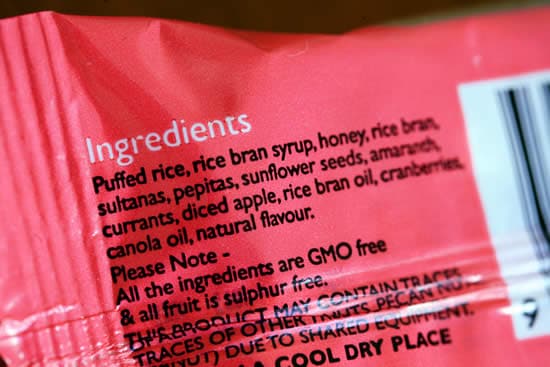
I just came back from three very full days of walking the show floor at Natural Products Expo West. This is an enormous trade show, featuring thousands of “natural” product vendors and manufacturers. It’s so big that it takes up the entire Anaheim convention center. That’s five full-size convention halls, fully loaded. (Picture the size of the Detroit Auto Show circa 2006, and then double it.)
I want need to write more about the show, but it’s going to take some time to collect my thoughts. For now I’ll just say that, in my humble opinion, about 90% of the products at the show range from neutral to downright bad for you. I’d even argue that many of them aren’t anywhere close to “natural.” In other words, there’s a lot of healthwashing going on.
That’s not to say there aren’t fantastic companies at the show, too — there are! And if just 10% of the products at the show are indeed healthful, and are from companies that truly “walk the talk,” then there are a heck of a lot of great products out there. Indeed, I now have a huge stack of business cards from companies making truly healthful products that I’m genuinely excited about.
The main frustration I had at the show was that it seemed like sugar was in everything. Of course, most “natural” products don’t list the word “sugar” anywhere in the ingredients list — consumers hate that, of course. Instead, they list various other types of refined, concentrated sources of sugar, like brown rice syrup or honey.
So with regards to sugar in manufactured foods, whether “natural” or not, here’s what you need to know.
1. Ingredients are Listed by Quantity
When reading the nutrition facts label, ingredients are listed in order of predominance by weight. This means that the product contains more of the first ingredient than any other single ingredient. So if the ingredients are “oats, honey, peanut butter, water, salt” you know that there are more oats than honey in the product, even if only by a tiny margin. However, it’s possible that if you combine the honey and peanut butter, they outweigh the oats.
2. The Tricky Part
Sugars can be listed under various names (since, strictly speaking, they’re different foods), so manufacturers will frequently use more than one type of sugar so they can move them further down the list.
For example, if the manufacturer decides to use honey and maple syrup as the sweeteners instead of just honey, the ingredients list might look more like this: “oats, peanut butter, honey, maple syrup,water, salt.” It can be the same amount of sugar as the first example, but now they’ve gotten peanut butter moved up on the list (and sugar moved down).
3. Refined Sugar is Refined Sugar
Here’s where it gets really challenging: It can be really hard to spot those added sugars. Below I’ve compiled a list of the most common types of sugars. Don’ t let some of their healthy-sounding names fool you: REFINED SUGAR IS REFINED SUGAR!
(Sorry for yelling, but this has become a big pet peeve.)
I didn’t see any corn syrup at the show — manufacturers have wised up by now, of course. (It may be time to adjust my second rule). In its place, I often saw brown rice syrup, evaporated cane juice, and fruit juice concentrate. And I can’t state it enough: I saw a lot of those.
This is not a complete list, but it covers the vast majority of them (if I missed any biggies, please share in the comments). You’ll also see a few commonalities which can make some easier to spot: “Syrup,” “malt,” and anything ending in “-ose.”
- Brown Rice Syrup (this was by far the most common added sugar I saw at the show – I even saw one booth with a huge graphic, extolling brown rice syrup’s virtues!)
- Fruit Juice Concentrate
- Fruit Juice
- Sugar
- Invert Sugar
- Cane Sugar
- Cane Juice
- Evaporated Cane Juice
- Raw Cane Sugar
- Brown Sugar
- Beet Sugar
- Palm Sugar
- Date Sugar
- Coconut Sugar (I predict you’re going to be seeing this one a lot more often very soon)
- Barley Malt (Manufacturers love this one because it doesn’t have the words “syrup” or “sugar” in the name)
- Malt Syrup
- Rice Bran Syrup
- Corn Syrup
- Corn Syrup Solids
- High Fructose Corn Syrup
- Dextrose
- Maltodextrin
- Glucose
- Glucose Solids
- Fructose
- Sucrose
- Maltose
- Lactose
- Galactose
- Honey
- Maple Syrup
- Agave
- Sorghum Syrup
- Diastatic Malt
- Molasses
- Caramel
- Treacle
- Golden Syrup
- Panocha
- Muscovado Sugar
- Turbinado Sugar
- Demerara Sugar
- Sucanat
- Rapadura
- Jaggery
- Panela
- Monk Fruit / Luo Han Guo (Deserves a mention, since I saw it several times at the show. You’re probably going to see this one a lot in the next couple of years, too.)
4. A Note on “Organic”
Organic sugar is still sugar. Need I say more?
In Conclusion
Before anyone flames me in the comments, I’m not saying that sugar — in small amounts — isn’t okay to eat (I’m not going to use the word “moderation,” of course). But what I saw last weekend wasn’t small amounts — there was sugar in so many products, and it such high proportions, that it gives me great concern. So remember to read those labels, and really consider what you’re eating.

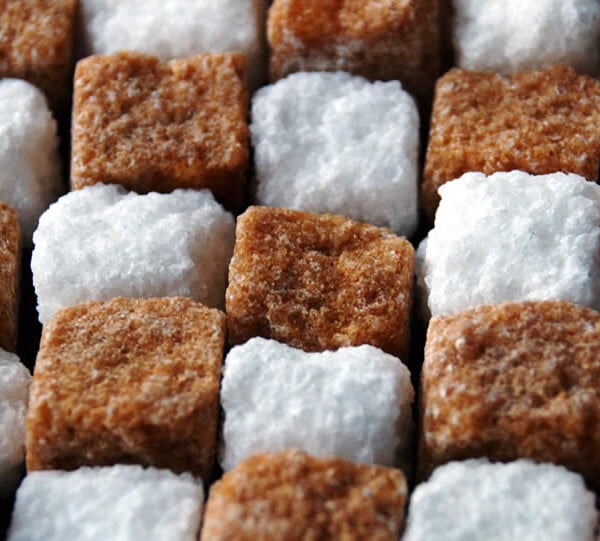
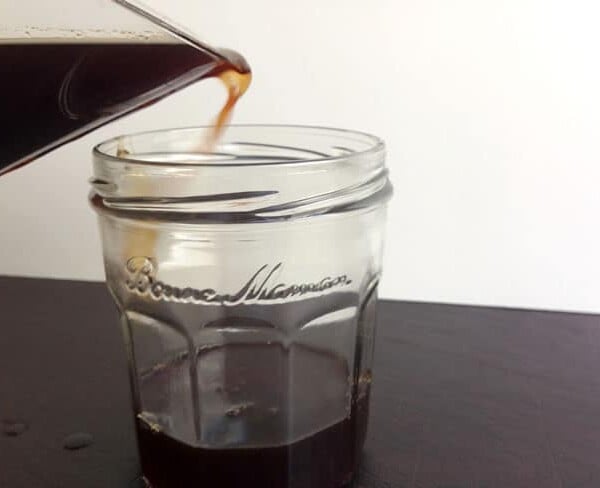
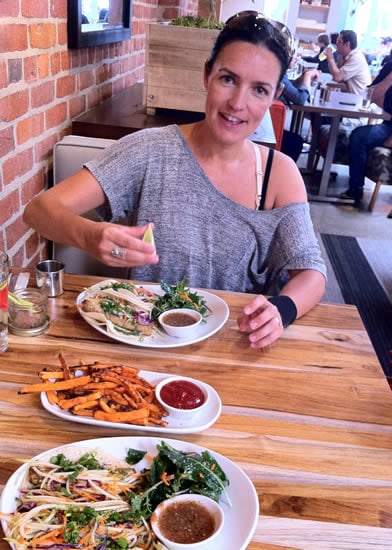
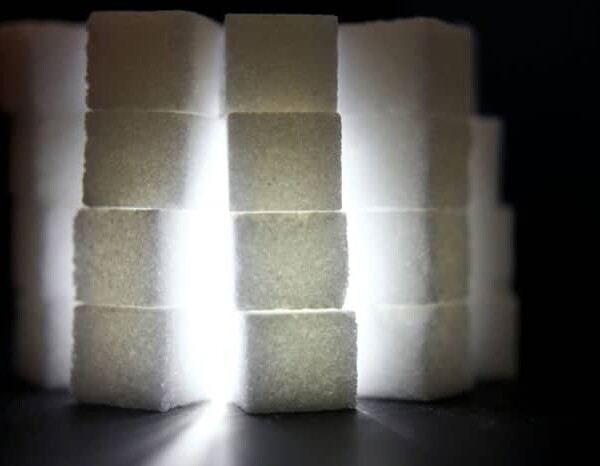





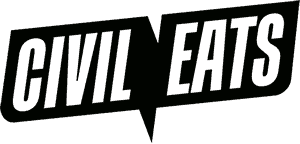









Great article. I am new to eating organic and gluten free, as well as cutting out sugar. Thank you for the extensive list, and the gentle poke that ‘organic’ is still sugar. 🙂
Thank you for this! I try to explain these things a lot to other people who ask why I don’t eat sugar and which sugars to avoid and it’s a complicated situation!! I’m paleo so it’s important for me to understand these things, especially that tricky “organic cane sugar”– which is still sugar…!
I follow you on instagram and really enjoy what you post so thought I’d pop on over to the blog for some more health and wellness bloggin 🙂
I now think sugar is worst than fat and even natural saturated fat (not talking about trans fat which is pretty high up there in terms of bad). So that is why whole milk, and whole yogurt is better for you than the low-fat version. Because the low-fat version has more sugar.
There are tons of reasons why sugar is so bad. It ranges from causing metabolic syndrome, to insulin resistance, to diabetes. It causes inflammation which increase risk of cardiovascular diseases and even dementia. Sugar binds to proteins producing Advanced Glycated End Products and wrinkles. Plus it makes us fat. And the list goes on.
I couldn’t agree more! As someone who has just recently started to eat “clean” or as I also like to call it, “honest” eating, I am shocked by how many foods say they are healthy, but are not! I try to eat only “real” food but sometimes struggle. I’m probably about 80% clean at this time and am working towards being 100% soon.
Sent over here by Dan at Casual Kitchen. Nice piece! I’ve noticed a lot of those synonyms for “sugar” recently and made the determination that a candy bar is, in many cases, no less nutritionally defective than a granola or protein or raw-food bar. My darling husband got me some of those raw-food “protein” bars … not only did they taste like they’d been scraped off the bottom of my shoe, they had less protein than a handful of mixed nuts and as many grams of sugar as a Milky Way Midnight. LOL so sad.
does that list include refined sugars only?
can you please explain how sweeteners like fruit juice qualify as “refined”? and what about panocha–tee hee, sorry, that word makes me laugh every time because it is VERY vulgar in some Spanish-speaking countries–isn’t it supposed to be made with panela which is, by definition, unrefined whole cane sugar?
thanks!
I’m basically using the terms “concentrated” and “refined” interchangeably to make my point.
The list is really sources of “concentrated” sugars. Of course there are different degrees of concentration — fruit juice will have less sugar compared to, say, evaporated cane juice — but it’s still just sugar.
I recently went on a 14-day cleanse, restricting my diet to fruit and vegetable juices, soups, smoothies, etc. I had such a great experience that when I came off it, I have tried to stay on a mostly raw diet and am, for the first time, making a concerted effort to stay away from processed foods, gluten, and sugar. However, sugar is a tough one because I bake as a hobby and I enjoy eating what I make! Obviously I’m baking a lot less with an almost raw diet, but when I do decide to bake, or when I do need to add something sweet to, say, a green smoothie or a salad dressing (obviously small amounts) what is my best source? I’m learning that dates can work . . . and maybe coconut? What are my options? What resources do you recommend I check out? Thanks!
Hi Marisa! Congrats on your success with the cleanse – glad it was a great experience for you.
I did a couple of posts last year on types of sugar that you might like:
http://www.eatingrules.com/2011/05/introduction-to-sugar/
http://www.eatingrules.com/2011/05/what-is-the-healthiest-sugar/
holy moly you are super serious about this… don’t visit my blog today – it’s chocolate malted creme brulee, with Whoppers.
Ha! The thing is, your chocolate-malted-creme-brulee-outrageousness isn’t pretending to be something it’s not. 🙂
(ps: holy cow, it looks fantastic!)
I say, call a spade a spade, sugar is sugar… if the purveyor of “healthy products” feels the need to misrepresent their products in this way, what does this say about the entire industry? Seeing the words “evaporated cane juice” on a product is the quickest way to turn me against buying a product, nothing against the sugar, I don’t mind a little sugar (all things in moderation) but I hate the industry attempts to mislead us.
You’re not counting the sugar alcohols (maltitol, xylitol etc) as sugars?
Refind sugar is not healthy but I consider artificial sweetners to be much worse and will not let my kids eat anything that contains them.
It’s interesting you point out the sugar alcohols. I didn’t include them in the list because I don’t recall seeing them anywhere at the show, actually. They’re sort of in-between artificial sweeteners and regular sugar (they’re about 2/3 the calories, gram for gram)… this probably warrants a separate blog post!